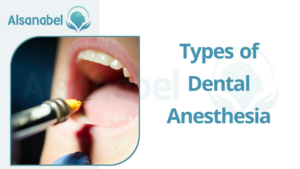Dental anesthesia is a crucial aspect of oral health care that plays a vital role in minimizing pain and discomfort during various dental procedures. It allows dentists to perform necessary treatments efficiently while ensuring patient comfort. In this article, we will explore the importance of it in oral health and discuss some common dental procedures that require its administration.
Importance of Dental Anesthesia in Oral Health
Dental anesthesia is essential not only for patient comfort but also for effective dental treatment. It helps alleviate dental anxiety and fear by numbing the area being treated, allowing patients to relax during procedures. This is particularly important for individuals with dental phobia, as it can help them receive the necessary dental care they need.
Common Dental Procedures that Require Anesthesia
Several dental procedures commonly require the administration of anesthesia to ensure patient comfort and successful treatment outcomes. These include:
- Tooth Extractions: Whether it’s a wisdom tooth removal or a decayed tooth extraction, anesthesia is typically applied to numb the area where the tooth will be removed. This ensures that patients do not feel pain during the procedure.
- Root Canal Therapy: During a root canal, anesthesia is necessary to numb the tooth and surrounding tissues. This allows dentists to access the infected pulp chamber and remove it without causing any discomfort to the patient.
- Dental Implant Placement: Anesthesia is usually used when placing dental implants to ensure a pain-free experience. It helps numb the area where the implant will be inserted, allowing for a more comfortable and successful procedure.
- Gum Surgeries: Procedures such as gum grafts or periodontal surgery often require local anesthesia to minimize pain and discomfort. Anesthesia ensures that patients do not feel pain while the dentist works on improving their gum health.
Types of Dental Anesthesia

Local Anesthesia: How it works and its benefits
Local anesthesia is the most common type of anesthesia used in dentistry. It involves the injection of an anesthetic agent into a specific area of the mouth, numbing the nerves and tissues in that area. This type of anesthesia is typically used for minor procedures such as filling cavities, removing small tumors, or repairing chipped teeth.
The benefits of local anesthesia include:
- Pain relief: Blocks the transmission of pain signals, ensuring that patients do not feel any pain or discomfort during dental procedures.
- Reduced anxiety: By numbing the area being treated, It helps patients relax and reduces anxiety or fear associated with dental visits.
- Improved precision: Numbing the area allows dentists to perform procedures more precisely, as patients don’t experience reflex movements or flinching.
General Anesthesia: When it is necessary and its risks
General anesthesia is less commonly used in dentistry but may be necessary for certain complex or invasive procedures. It involves the use of medications to induce a state of unconsciousness, ensuring that patients are completely unaware and feel no pain during the procedure. Dentists typically work with an anesthesiologist to administer and monitor it.
General anesthesia may be used for procedures such as:
- Extensive oral surgeries
- Jaw realignment
- Congenital abnormalities
- Special needs patients
It is important to note that general anesthesia carries some risks, including potential adverse reactions to medications and complications with breathing or heart rate. Dentists carefully assess each patient’s medical history and overall health before deciding to use general anesthesia. They also closely monitor patients during the procedure to ensure their safety.
The Role of Anesthesiologists in Dentistry
Anesthesiologists vs. Dentists administering anesthesia
While dentists are trained to administer local anesthesia for minor dental procedures, anesthesiologists play a crucial role in providing general anesthesia for more complex or invasive treatments. Anesthesiologists are medical doctors who specialize in anesthesia, pain management, and ensuring patient safety during surgical procedures.
Unlike dentists, anesthesiologists have extensive training in anesthesia techniques, drug administration, and monitoring patients’ vital signs during surgery. They are well-versed in handling potential complications and emergencies that may arise during the administration of general anesthesia.
Collaboration between dentists and anesthesiologists is common when general anesthesia is required for dental procedures. The dentist is responsible for the dental aspects of the procedure while the anesthesiologist focuses on administering and monitoring the anesthesia to ensure the patient’s comfort and safety.
The training and qualifications of dental anesthesiologists
To become a dental anesthesiologist, individuals must first complete dental school and become licensed dentists. Following dental school, they undergo additional years of specialized training in anesthesiology.
This training involves rotations in medical centers and hospitals where the dental anesthesiologists gain extensive experience in administering various types of anesthesia, managing anesthesia-related complications, and handling patients with complex medical histories.
After completing their training, dental anesthesiologists can obtain certification from organizations such as the American Board of Dental Anesthesiology or the American Dental Society of Anesthesiology. This certification validates their expertise and ensures that they meet the highest standards in providing safe and effective anesthesia for dental procedures.
The presence of trained dental anesthesiologists in dental practices ensures that patients requiring general anesthesia receive the highest standard of care. These specialists work closely with dentists to assess each patient’s specific needs, tailor anesthesia plans accordingly, and maintain patient comfort and safety throughout the procedure.
Pain management during dental procedures
Dental anesthesia, administered by anesthesiologists, plays a crucial role in managing pain during complex or invasive dental procedures. While local anesthesia can effectively numb the area being treated, general anesthesia may be necessary for patients who have a low pain threshold, need extensive dental work, or have difficulty cooperating during the procedure.
By providing general anesthesia, dental anesthesiologists can ensure that patients remain completely pain-free throughout the entire procedure. This allows dentists to perform necessary treatments with precision and effectiveness, while patients experience minimal discomfort.
Reduced anxiety and improved patient comfort
Anesthesia can also help reduce anxiety and improve patient comfort during dental procedures. Many individuals experience dental anxiety or dental phobia, which can make it challenging for them to receive the necessary dental care. It helps alleviate anxiety and create a more relaxed environment for the patient.
With the help of it, patients can undergo complex dental treatments without experiencing fear or discomfort. This allows dentists to work efficiently and perform procedures that may require extended periods of time.
In addition to reducing anxiety, it also enables patients to undergo multiple procedures in a single session. This can minimize the number of appointments required and provide a more efficient treatment process.
Risks and Side Effects of Dental Anesthesia

Potential Complications of Local Anesthesia
While local anesthesia is generally safe, there are potential complications that patients should be aware of. These complications are rare but can include:
- Infection at the injection site
- Allergic reactions to the local anesthetic
- Nerve damage, resulting in numbness or tingling
- Temporary discomfort or pain at the injection site
It’s important for patients to disclose any allergies or sensitivities they may have to their dentist or dental anesthesiologist to minimize the risk of an adverse reaction.
Rare but Serious Risks Associated with General Anesthesia
While general anesthesia is generally safe, there are rare but serious risks associated with its use. These risks can include:
- Allergic reactions: A severe allergic reaction to the anesthesia drugs can occur, leading to difficulty breathing or a drop in blood pressure.
- Cardiovascular problems: In rare cases, general anesthesia can cause abnormal heart rhythms, heart attack, or stroke.
- Respiratory issues: Sometimes, patients may experience breathing difficulties during general anesthesia, requiring assistance with a breathing tube.
- Postoperative nausea and vomiting: Some individuals may experience nausea and vomiting after waking up from general anesthesia.
It’s important for patients to discuss their medical history and any concerns they have with their dental team before undergoing general anesthesia.
Preparation for Dental Anesthesia
Preoperative instructions and guidelines
Prior to undergoing dental anesthesia, patients may receive preoperative instructions and guidelines. These instructions may include:
- Fasting: It is common for patients to be advised not to eat or drink anything for a certain period of time before the procedure. This is to prevent the risk of aspiration during the anesthesia.
- Medications: Patients may be instructed to continue taking certain medications as usual or to temporarily stop taking specific medications before the procedure. It is important to follow these instructions carefully and to inform the dentist or dental anesthesiologist about any medications being taken.
- Transportation: Due to the sedative effects of some anesthesia medications, patients are generally advised not to drive or operate machinery after the procedure. Arranging for transportation home should be done in advance.
The importance of discussing medical history with your dentist
Discussing one’s medical history with the dentist or dental anesthesiologist is crucial before undergoing any type of anesthesia. This allows them to make informed decisions and provide the safest and most appropriate anesthesia plan.
Some important information to disclose may include:
- Allergies: Patients should inform their dental team of any allergies or sensitivities they have, including reactions to anesthesia medications or latex.
- Current medical conditions: Chronic conditions such as diabetes, heart disease, high blood pressure, or respiratory problems should be disclosed. These conditions can affect the choice of anesthesia and the monitoring required during the procedure.
- Medications and supplements: It is important to provide a comprehensive list of all medications, including over-the-counter drugs and herbal supplements. Certain medications can interact with anesthesia drugs and cause complications.
By openly discussing their medical history, patients help ensure that the dental team can tailor the anesthesia to their specific needs and minimize potential risks.
Post-Anesthesia Care
Recovery tips and self-care
After undergoing dental anesthesia, it is important for patients to focus on their post-anesthesia care to ensure a smooth recovery. Here are some tips and self-care measures to consider:
- Rest and relaxation: Give your body time to recover by resting and taking it easy for the first 24 hours after the procedure. Avoid strenuous activities or heavy lifting that could put stress on your body.
- Pain management: It is normal to experience some discomfort or mild pain after it. Your dentist may prescribe pain medication or recommend over-the-counter pain relievers to help manage any discomfort. Follow the instructions provided and take them as directed.
- Ice packs: Applying ice packs to the affected area can help reduce swelling and discomfort. Place a cold pack or a bag of frozen vegetables wrapped in a thin cloth on the outside of your cheek for about 15 minutes at a time.
- Dietary considerations: Stick to soft foods and liquids for the first few hours following the procedure. Avoid hot or spicy foods that may irritate the surgical area. Gradually introduce solid foods as tolerated.
- Oral hygiene: It is important to maintain good oral hygiene even after it. Gently brush your teeth, avoiding the surgical area, and rinse your mouth with a warm saltwater solution to promote healing. Follow any specific instructions given by your dentist.
Possible side effects and how to manage them
While dental anesthesia is generally safe, there are some potential side effects that may occur. It is important to be aware of these side effects and know how to manage them:
- Nausea and vomiting: Some individuals may experience nausea or vomiting after it. It is advisable to eat small, light meals and avoid greasy or heavy foods that could further upset the stomach.
- Drowsiness: Certain anesthesia medications can cause drowsiness and dizziness. It is recommended to rest and avoid activities that require mental alertness or physical coordination, such as driving or operating machinery until the effects wear off.
- Swelling and bruising: Swelling and bruising around the surgical area are common after dental anesthesia. Applying ice packs as mentioned earlier can help reduce swelling. If the swelling persists or worsens, or if you notice any signs of infection, contact your dentist immediately.
- Bleeding: Some minor bleeding may occur following dental anesthesia. Bite down gently on a clean piece of gauze or a tea bag to apply pressure to the area. If bleeding persists or becomes excessive, contact your dentist.
Remember to follow any specific instructions provided by your dental team for post-anesthesia care and reach out to them if you have any concerns or questions during your recovery period.
Dental Anesthesia for Children

Understanding the special considerations for pediatric patients
When it comes to dental procedures for children, anesthesia is sometimes necessary to ensure their comfort and safety. Pediatric patients require special considerations due to their age and developmental stage. Here are some key points to understand about dental anesthesia for children:
- Importance of anxiety management: Dental procedures can be stressful for children, leading to anxiety and fear. Anesthesia helps alleviate discomfort and anxiety, allowing the dental team to perform the necessary procedures effectively.
- Suitability assessment: Before administering anesthesia, the dentist will evaluate the child’s medical history and overall health. This assessment helps determine if anesthesia is necessary and if any precautions need to be taken.
- Different types of anesthesia: Depending on the complexity of the procedure and the child’s individual needs, different types of anesthesia may be used. Options include local anesthesia, nitrous oxide (laughing gas), or general anesthesia.
- Safety protocols and monitoring: Dental anesthesiologists follow strict safety protocols to ensure the well-being of pediatric patients. This includes continuous monitoring of vital signs, such as heart rate, blood pressure, and oxygen levels, throughout the procedure.
The role of pediatric dental anesthesiologists
Pediatric dental anesthesiologists play a crucial role in ensuring the safe administration of anesthesia to children. Here are some key aspects of their role:
- Specialized training and expertise: Pediatric dental anesthesiologists undergo extensive training specific to pediatric patients. They are well-versed in the unique anatomical and physiological considerations of children, ensuring optimal care during anesthesia.
- Tailored anesthetic plans: Each child is different, and the dental anesthesiologist personalizes the anesthetic plan based on the child’s needs. Factors such as age, weight, and medical history are taken into account to determine the most appropriate anesthesia technique.
- Collaboration with dental team: Pediatric dental anesthesiologists work closely with the dental team to provide seamless care. They communicate effectively to ensure everyone involved is aware of the child’s medical history, treatment plan, and any necessary precautions.
- Emergency management: In rare cases, complications may arise during dental anesthesia. Pediatric dental anesthesiologists are trained to handle emergencies promptly and appropriately. They are equipped to manage potential complications and ensure the child’s safety.
When it comes to dental anesthesia for children, the focus is on providing a safe and comfortable experience. Pediatric dental anesthesiologists, in collaboration with the dental team, ensure that children receive the necessary dental treatments while minimizing anxiety and discomfort. Parents can trust in the expertise and specialized care provided by these professionals.
The importance of dental anesthesia
Dental anesthesia plays a crucial role in ensuring successful dental procedures for children. It helps manage anxiety and discomfort, allowing the dental team to perform necessary treatments effectively. With the use of anesthesia, children can undergo dental procedures with minimal stress and fear.
Busting common myths
There are some common myths and misconceptions surrounding dental anesthesia for children. It’s important to address these to provide accurate information to parents and caregivers. Here are a few myths and the corresponding truths:
- Myth: Dental anesthesia is only used for major dental procedures.
Truth: Dental anesthesia can be used for a wide range of procedures, from simple fillings to more complex surgeries. It ensures the child’s comfort and safety regardless of the procedure’s complexity. - Myth: Dental anesthesia is unsafe for children.
Truth: Dental anesthesia for children is safe when administered by trained professionals who follow strict safety protocols. Pediatric dental anesthesiologists are specifically trained to meet the unique needs and requirements of pediatric patients.
It’s important for parents and caregivers to communicate openly with their dental team about any concerns or questions they may have regarding dental anesthesia. By dispelling myths and providing accurate information, parents can make informed decisions for their child’s dental health.
